- Home
- Alison Weir
Henry VIII Page 7
Henry VIII Read online
Page 7
A door led from the great watching chamber into the presence chamber, or what we would now call the throne room. It was dominated by a great chair of estate on a dais, surmounted by a rich canopy of estate, which faced the door; no one, “of whatsoever degree,” might “come nigh the King’s chair nor stand under the cloth of estate.”28 This was the room where the sovereign held court, received ambassadors, and dined in state. When he was not present, courtiers might frequent the room, but they had to doff their caps and bow to the empty throne as they passed. The presence chamber was often the most richly furnished and decorated room in the palace, and certainly the most formal and ceremonial of the state rooms. As Henry’s reign progressed, more and more people were permitted access to it, and it consequently declined in importance. As a result, its functions would in time shift to the privy chamber.
The privy chamber, the King’s inner sanctum, was separated by a short passage from the presence chamber. Here he conducted his private life, usually took his meals, worked on state business, or relaxed. Access to this room and those behind it was strictly controlled: only the members of the Privy Chamber department and the King’s councillors had right of entry. Others had to wait for an invitation.
The privy chamber was usually a medium-sized room lavishly furnished with vivid tapestries, floor carpets, and a chair of estate. In the privy chamber at Greenwich there was also “a breakfast table of walnut tree, a round table covered with black velvet, a square table, a cupboard of wainscot, three joined forms with three stools, a table and a pair of trestles, a clock, a painted table,29 a standing glass of steel, a branch of flowers wrought upon wire, three comb cases of bone, four little coffers for jewels, a chair of joined work, one pair of regals30 with a case, one pair of tables of bone and wood31 in a case of leather, a pair of gridirons, a fire shovel and a fire fork.”32
The Privy Chamber was one of the two power centres of the court (the other being the Privy Council). Its staff were the King’s intimates; they were his chosen companions and performed every personal service for him, so they were therefore in a strong position to influence political affairs and act as Henry’s chief advisers.
Beyond the privy chamber was usually a small complex of inner chambers or privy lodgings which varied in size and number, depending on the dimensions of the palace. Often lined with timber linenfold panelling, and therefore somewhat dark, they included at least one bedchamber, a garderobe, a “withdrawing room,” a raying or robing chamber, a closet or oratory, and perhaps a study, library, or bathroom. These rooms later became known as the secret lodgings,33 and they were usually linked by a privy stair or gallery to the Queen’s apartments. The only courtier officially allowed entry to the privy lodgings was the Groom of the Stool, who was head of the Privy Chamber department.
Henry VIII’s formal bedchamber contained his massive bed of estate, but he normally slept in a second bedchamber beyond it. At Greenwich and Hampton Court he had a third bedchamber, on the Queen’s Side. Each of his bedchambers had a garderobe leading off it, and some also had a study next door. Comparatively little is known about Henry’s bedchambers because of the high degree of privacy he achieved.
Most privy lodgings had at least one closet. Closets were either used for storage or business or they were fitted out as oratories, where the King could perform his private devotions; at Hampton Court such a closet had a painted altarpiece,34 while the King’s “privy closet” there was used as a study and furnished with “cupboards, tables, boxes, chests and a clock.”35 In other closets, curios and objets d’art were displayed in glass cabinets. At Greenwich, one closet had coffers and chests crammed with such items.36 Closets might also serve as libraries in the lesser houses.
Henry took a keen interest in planning the gardens around his palaces and stocking them with rare and beautiful plants.37 There were fewer varieties of flowers in England then; roses were naturally a particular favourite, and the damask rose is said to have been introduced into the country by Thomas Linacre, Henry’s physician.38 Among other flowers to be found were lilies, violets, primroses, gilliflowers, columbines, lavender, and daffodils, as well as a large variety of herbs, which were used in cooking and for medicines.
None of the Tudor royal gardens survive, but we know they were formal in design and initially mediaeval in style. The King’s privy gardens were usually accessible from his privy lodgings by a private stair, and they were screened by high walls and locked to all but members of the Privy Chamber. 39
Some gardens had lawns, others symmetrically placed flowerbeds edged with low railings or trellises and divided by a network of paths. Situated at intervals were striped poles bearing sculptures of the King’s heraldic animals (“the King’s Beasts”); there might be a sundial40 or trees shaped by topiary. Such a garden may be seen in the background of the portrait of Henry VIII and his family that is now at Hampton Court; the setting is Whitehall Palace. One feature of the period was the knot garden, with square beds edged with tiles, bricks, or box; the beds contained shrubs and flowers shaped into geometrical, interwoven patterns or “knots.” Henry VII had built such a garden at Richmond with “royal knots, alleyed and herbed,”41 and thus set a fashion.
Henry VIII built banqueting houses in many of his gardens, as well as fountains, and arbours of brick, stone, branches, or trellis, set against the wall. During Henry’s reign, French Renaissance influence began to manifest itself in the royal gardens, since the King had imported most of his gardeners from France. Soon, Renaissance features such as statues, columns, spheres, and urns would be introduced;42 Renaissance gardens were designed to please the senses and tease the intellect, so many decorative features had symbolic meanings. One of Henry’s chief pleasures was to walk in his gardens, and in the summer he often transacted business there with favoured ministers.
Many of Henry’s palaces were sketched by Anthony van Wyngaerde in the 1540s and 1550s; some were later the subjects of paintings by various artists. Although some are now known to be not entirely accurate, the pictures contain a wealth of detail and provide a unique visual record of these long-vanished buildings.
6
“The King’s House”
Inside his palaces, Henry VIII lived in unprecedented splendour. The Tudor age was one in which outward show counted for a great deal: if you had wealth, you flaunted it. The interior decor of the period was rich, vivid, even gaudy. The walls, ceilings, tapestries, and furnishings of the King’s apartments gleamed with gold and bright colours; everything that could be gilded, or shot through with gold thread, was so adorned. Next in importance came silver, then baser metals. The decoration of a room was determined by its status. Everything in the King’s inward and outward chambers was carefully coordinated to delight the eye and create a magnificent setting.
Henry VIII was determined to be at the forefront of fashion, and as the reign progressed and Renaissance influence grew stronger, the interior decoration of the palaces became increasingly European in style. After January 1516, when the term is first mentioned,1 “antique” decoration began to proliferate.2 “Antique work” was supposed to derive from the classical art and sculpture of ancient Greece and Rome, but it had a sixteenth-century quality all its own; it has been suggested that the word “antique” (or “antick,” as it was often spelt) should read “antic,” because the style was whimsical and sometimes mischievous in concept.3
Henry VIII decorated his palaces and banqueting houses with antique ornament and motifs; such decoration was perhaps out of place in mediaeval buildings, where it sat side by side with heraldic emblems and mottoes, yet it lent Henrician interiors a Renaissance patina and rendered them unique.
One of the most popular types of antique work was grotesque decoration. It derived from first-century paintings discovered in the 1490s in the grottoes (Italian, grottescio) on the sites of the Golden House of Nero and the baths of Titus in Rome. Grotesque decoration was highly mannerist, extravagant, and often absurd: it took the form of painted or car
ved borders, friezes, panels, and pilasters featuring human figures, flora and fauna, weapons, masks, and decorative plates, all arranged in a formal yet fantastic composition around a spinal candelabrum.4 Such work often featured elaborate gilding. The craze for grotesque decoration reached France before 1510, but it was not until the 1520s and 1530s that it became common in Henry VIII’s palaces.
The ceilings in Henry’s palaces normally were flat and featured moulded fretwork with pendants; some were lavishly gilded and embellished with battens and bosses bearing colourful badges and heraldic devices. Sometimes the ground between the battens was painted or filled in with painted leather-mâché panels, as in the so-called Wolsey Closet at Hampton Court. The Whitehall family group painting features a battened ceiling in the antique style. Ceilings in large rooms such as halls and kitchens sometimes had exposed timbers. 5
The walls in the palaces were mainly of plastered brick; in utilitarian rooms they were painted, while those in important chambers were often clad with the linenfold panelling so characteristic of the age. More elaborate and ornate panelling, often embellished with grotesque motifs, adorned the royal apartments, as may be seen in the Whitehall family group painting. A few rooms had murals or painted grotesque work at the centre of their decorative schemes. Grotesque work also ornamented the pillars flanking the thrones in some of Henry’s presence chambers.6 Many rooms had moulded friezes and cornices. At Hampton Court, there was a frieze of putti in the King’s Long Gallery; some fragments are still extant.7
Most important rooms were hung with tapestry or fabrics, the richest being reserved for the royal apartments. Henry’s sets of Italian silk hangings were among his most priceless possessions, while at Hampton Court he had hangings of cloth of gold and velvet embroidered with royal emblems. 8 Some hangings were fringed, some lined: they were hung either taut or in folds.
Henry VIII owned over two thousand tapestries,9 of which about four hundred had been inherited from his father; some were extremely valuable. The display of tapestries denoted great wealth, since they were made of costly silk and wool thread dipped in expensive dyes, and each one took a team of skilled weavers some three years to complete. In 1528, the King paid £1,500 (about £450,000 today) for one ten-panel set of tapestries depicting the life of King David.
Twenty-eight of Henry’s tapestries survive at Hampton Court. They include the ten-panel set The Story of Abraham, which was commissioned by Henry in the 1530s or 1540s for the great hall, where it still hangs today; this set, the most expensive in his collection and woven entirely of silk and silver-gilt thread, came from Brussels and is thought to have been based on paintings or designs by the Flemish master Bernard van Orley. Other sets, including the three panels of The Seven Deadly Sins and the four panels of The Triumph of Petrarch, had been originally owned by Cardinal Wolsey. Henry VIII also owned four sets of tapestries portraying the story of Esther, and others entitled The Story of Youth and The Seven Ages, as well as several showing hunting scenes.10 Armorial tapestries were popular: a Flemish tapestry bearing the arms of Henry VIII is at Hever Castle.
Many early sixteenth-century tapestries were Flemish; usually they were fashioned by master weavers and combined new classical trends with traditional chivalric themes. In 1515, however, the Italian artist Raphael set a new trend when he designed a set of tapestries, The Acts of the Apostles, for Pope Leo X. What was novel about them was the minute detail in Raphael’s cartoons, which left no scope for improvisation by the master weavers. Unfortunately, enthusiastic patrons, anxious to follow this new method, often commissioned artists of a lesser calibre than Raphael, with the result that tapestry design deteriorated during the sixteenth century. Henry VIII managed to acquire a set of tapestries copied from Raphael’s designs for the Pope, which he probably hung at Windsor Castle.11
Before 1542, the King commissioned for his new lodgings at Whitehall Palace another set of outstanding Brussels tapestries on a classical theme, The Triumph of the Gods; only two panels survive of the original seven, “The Labours of Hercules” and “The Triumph of Bacchus,” which may be seen today in William III’s presence chamber at Hampton Court. Such tapestries, with their Italian mannerist designs, complemented the antique décor in the palace rooms.
Tapestries were frequently changed around, the best being displayed on state occasions; when not in use, they were stored in huge presses: one at Greenwich was fifty-five feet long.12 The Master of the King’s Great Wardrobe was responsible for their maintenance and repair. Tapestries were rubbed clean with bread, and the crumbs then brushed away. They were usually hung with hooks and eyes, or nailed to battens attached to the walls.
Painted cloths, which were much cheaper than tapestries, were sometimes hung on the walls of rooms of lesser status.
Window frames and mullions were usually whitewashed, and the window bars painted red or black, as at Hampton Court.13 Mottoes or heraldic decorations were sometimes carved or painted on the sills or in a border around the window. The windows of the King’s inward chambers were hung with curtains or blinds, often both,14 and sometimes with tapestries or carpets. His curtains were chiefly of satin or silk stiffened with buckram; one pair was “of purple, white and black satin paned together.” 15 Curtains were hung from gilded rings over fixed rods; tall poles were used for drawing curtains at high windows.16
Miniatures in Henry VIII’s Psalter,17 which dates from around 1540, show Italian Renaissance interiors, with marbled walls, columns, and arched doorways and gaily tiled floors. One picture features a classically styled bed with a blue and gold tester and drapes. It has been suggested that these rooms are the invention of a fanciful artist, but many items— the bed itself, the floor tiles, and the X-framed chair—are typical of the period, so it is possible that these rooms did exist, perhaps at Nonsuch Palace, Henry’s long-vanished novelty house. The King and his family were depicted in similar classically inspired surroundings by Hans Holbein in his lost Whitehall mural.
The floors in Henry’s palaces were either of oak, which might be plastered or painted to look like marble, or tiled. Those on the ground floor were often paved with brick or flagstones.
Many rooms were still strewn with “grise” (rushes scented with sweet-smelling herbs such as saffron), in the mediaeval manner. These collected dirt and dust and sweetened the air, but after a while they stank of the “leakages of men, cats and dogs.”18 The King ordered the rushes to be renewed “every eight to ten days,” 19 and daily in the presence and privy chambers, but this did not always eliminate the smell, so the house had to be vacated for cleaning. During Henry’s reign, it became customary for rush matting to be used instead of loose rushes;20 the matting was sewn together in four-inch strips and fitted to cover the whole floor. In 1539, Master John Craddock was granted a monopoly for life to provide rush matting for all the royal houses near London.21 A fragment of such matting was found recently under the floorboards of a former courtier lodging at Hampton Court.22
Carpets, usually made of wool or velvet (although the word was also used to describe any strong, durable furnishing fabric), were to be seen on the floors of the royal apartments only; they were also used to cover tables, windows, cupboards, and walls. Henry VIII owned more than eight hundred carpets, most of them from Turkey.23 The King also had a large number of oriental rugs, or “foot cloths,” which were often placed in front of chairs of estate.24 Carpets, like tapestries, were very costly, and were therefore potent status symbols.
The royal apartments were heated by “fire pans,” movable charcoal braziers on wheels, or by hearth fires, fuelled by faggots or large logs called talshides, which were issued to all those entitled to bouche of court. At Whitehall and at Greenwich there were ceramic wood-burning stoves, which had been used in Europe since the thirteenth century; green glazed earthenware tiles unearthed during excavations at Whitehall in 1939 came from one such stove; they bear the monogram HR, which suggests that the stoves were built for the King’s use, as does the fact that the e
xpensive sea coal which was burned in them was reserved exclusively for the royal family. The household department responsible for the purchase and supply of coal and charcoal was the Coal House.
Most rooms in the palaces had fireplaces. These were normally flush with the wall and featured a four-centred Perpendicular arch, often decorated, but those in the royal apartments could be grandiosly elaborate. Henry is known to have had Renaissance-style chimneypieces at Whitehall, Greenwich, and Hampton Court.
A pair of cast iron and polished steel gridirons, or firedogs, bearing the badges and initials of Henry VIII and Anne Boleyn was once at Hever Castle, and can now be seen in the great hall at Knole in Kent. Made by Henry Romains, the King’s locksmith, they would have been placed on the hearth to support burning logs. In the summer, screens were set in front of fireplaces; Henry VIII had a screen carved with his arms, with feet fashioned as lions, dragons, and greyhounds.25
The palace courtyards and stairways were lit by lanterns; torches or links were set in iron wall-brackets or on iron cressets on poles 26 in the state apartments;27 while candles illuminated smaller rooms. Candles were of beeswax, and expensive: those in the royal apartments alone cost £400 a year;28 they were usually fixed on pricket-type or socketed candlesticks or candelabra, the latter being cross-beamed or wheel-shaped. Some candelabra were suspended from the ceiling; others were free-standing. Candlesticks were made of silver-gilt, iron, brass, or latten, and those used by the King might be fashioned in the antique style.
Henry VIII’s rooms were lit by quarriers, square blocks of fine beeswax with a wick,29 while “salad” oil was used to fuel small oil lamps for the King.30 Cheaper candles, called white lights, or rush lights were used in the palace’s lesser rooms and the service quarters. Each morning, before nine, the servants would collect all lanterns, unfinished candle-stubs, and torches in the interests of preventing waste. Candles, wax, and tallow were made and stored in the Chandlery, under the supervision of the Serjeant of the Chandlery, assisted by three Yeomen and a page. Because of the high cost of heating and lighting, the court went to bed earlier in the winter than in the summer.

 Richard III and the Princes in the Tower
Richard III and the Princes in the Tower Britain's Royal Families: The Complete Genealogy
Britain's Royal Families: The Complete Genealogy The Lady in the Tower: The Fall of Anne Boleyn
The Lady in the Tower: The Fall of Anne Boleyn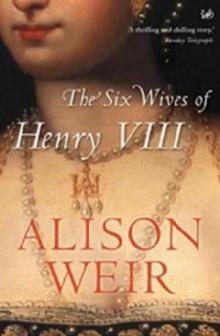 Six Wives of Henry VIII
Six Wives of Henry VIII Elizabeth of York: A Tudor Queen and Her World
Elizabeth of York: A Tudor Queen and Her World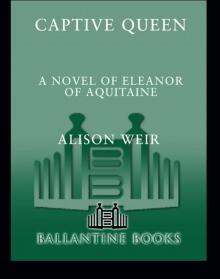 Captive Queen
Captive Queen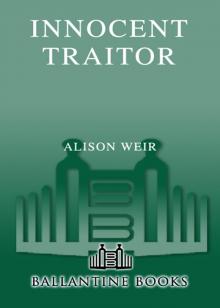 Innocent Traitor
Innocent Traitor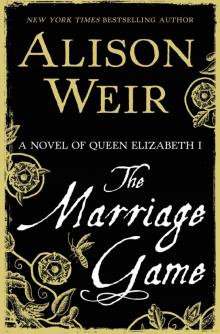 The Marriage Game
The Marriage Game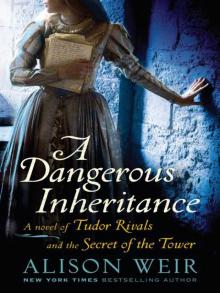 A Dangerous Inheritance
A Dangerous Inheritance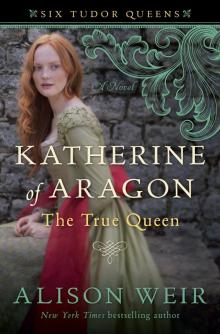 Katherine of Aragón: The True Queen
Katherine of Aragón: The True Queen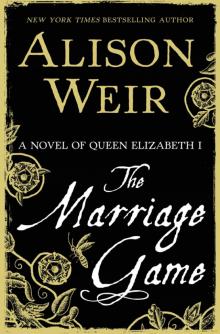 The Marriage Game: A Novel of Queen Elizabeth I
The Marriage Game: A Novel of Queen Elizabeth I Princes in the Tower
Princes in the Tower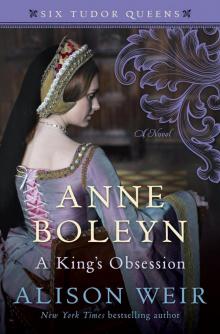 Anne Boleyn: A King's Obsession
Anne Boleyn: A King's Obsession Traitors of the Tower
Traitors of the Tower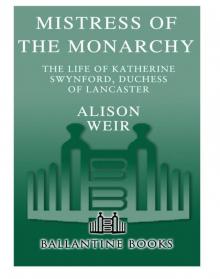 Mistress of the Monarchy: The Life of Katherine Swynford, Duchess of Lancaster
Mistress of the Monarchy: The Life of Katherine Swynford, Duchess of Lancaster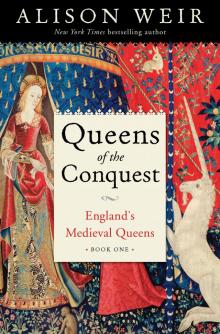 Queens of the Conquest: England’s Medieval Queens
Queens of the Conquest: England’s Medieval Queens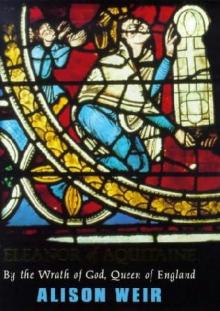 Eleanor of Aquitaine: A Life
Eleanor of Aquitaine: A Life Mary, Queen of Scots, and the Murder of Lord Darnley
Mary, Queen of Scots, and the Murder of Lord Darnley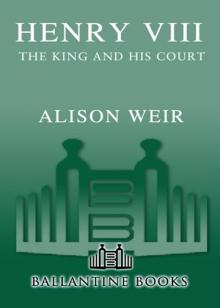 Henry VIII: The King and His Court
Henry VIII: The King and His Court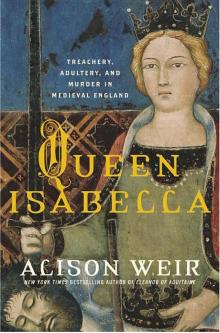 Queen Isabella: Treachery, Adultery, and Murder in Medieval England
Queen Isabella: Treachery, Adultery, and Murder in Medieval England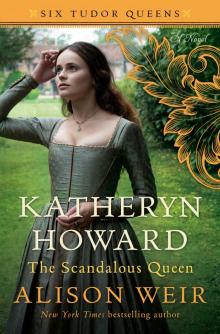 Katheryn Howard, the Scandalous Queen
Katheryn Howard, the Scandalous Queen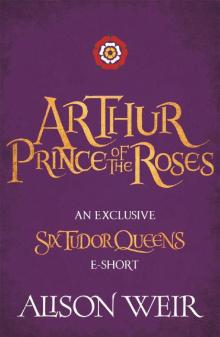 Arthur- Prince of the Roses
Arthur- Prince of the Roses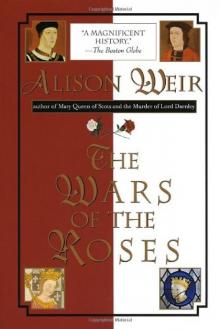 The Wars of the Roses
The Wars of the Roses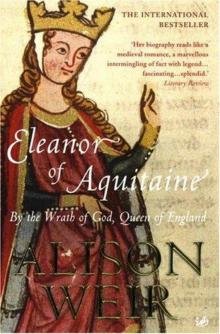 Eleanor of Aquitaine: By the Wrath of God, Queen of England
Eleanor of Aquitaine: By the Wrath of God, Queen of England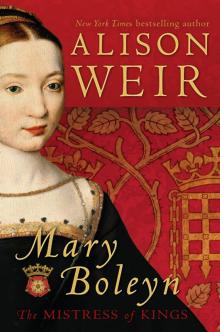 Mary Boleyn: The Great and Infamous Whore
Mary Boleyn: The Great and Infamous Whore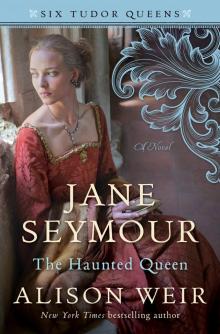 Jane Seymour: The Haunted Queen
Jane Seymour: The Haunted Queen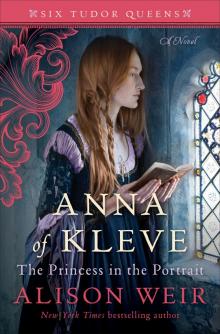 Anna of Kleve, the Princess in the Portrait
Anna of Kleve, the Princess in the Portrait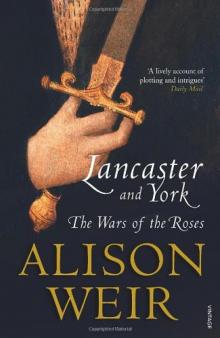 Lancaster and York: The Wars of the Roses
Lancaster and York: The Wars of the Roses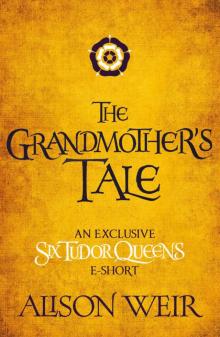 The Grandmother's Tale
The Grandmother's Tale The Princess of Scotland (Six Tudor Queens #5.5)
The Princess of Scotland (Six Tudor Queens #5.5)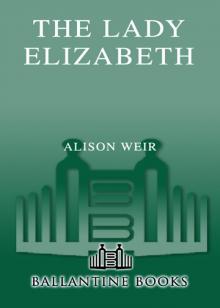 The Lady Elizabeth
The Lady Elizabeth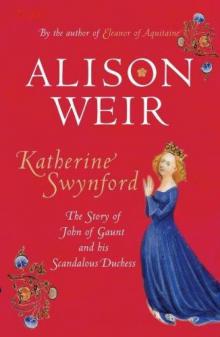 Katherine Swynford: The Story of John of Gaunt and His Scandalous Duchess
Katherine Swynford: The Story of John of Gaunt and His Scandalous Duchess The Curse of the Hungerfords
The Curse of the Hungerfords The Lost Tudor Princess: The Life of Lady Margaret Douglas
The Lost Tudor Princess: The Life of Lady Margaret Douglas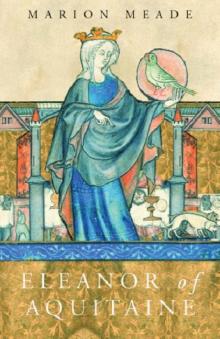 Eleanor of Aquitaine
Eleanor of Aquitaine Mistress of the Monarchy
Mistress of the Monarchy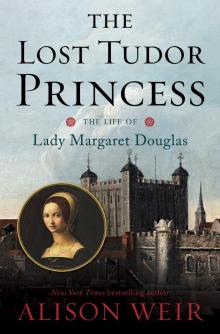 The Lost Tudor Princess
The Lost Tudor Princess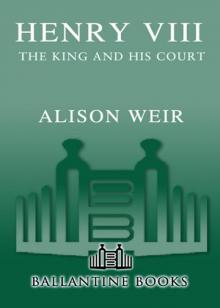 Henry VIII
Henry VIII Anne Boleyn, a King's Obsession
Anne Boleyn, a King's Obsession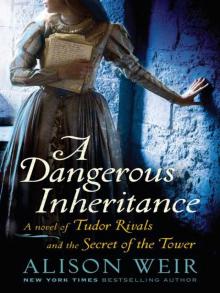 A Dangerous Inheritance: A Novel of Tudor Rivals and the Secret of the Tower
A Dangerous Inheritance: A Novel of Tudor Rivals and the Secret of the Tower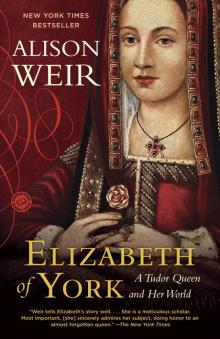 Elizabeth of York
Elizabeth of York Katherine of Aragon, the True Queen
Katherine of Aragon, the True Queen Katherine Swynford
Katherine Swynford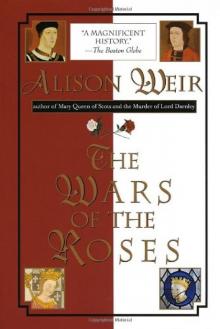 Wars of the Roses
Wars of the Roses Queens of the Conquest
Queens of the Conquest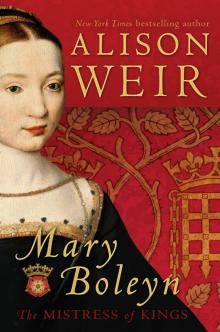 Mary Boleyn
Mary Boleyn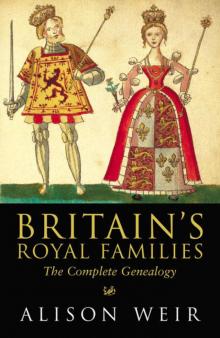 Britain's Royal Families
Britain's Royal Families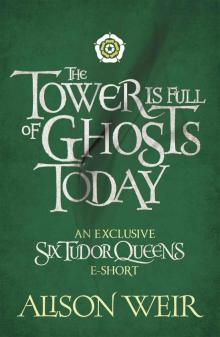 The Tower Is Full of Ghosts Today
The Tower Is Full of Ghosts Today Life of Elizabeth I
Life of Elizabeth I Anne Boleyn A King's Obssession
Anne Boleyn A King's Obssession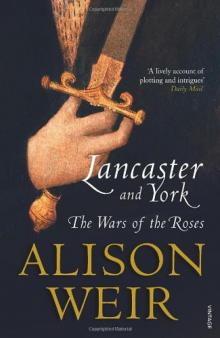 Lancaster and York
Lancaster and York Jane Seymour, the Haunted Queen
Jane Seymour, the Haunted Queen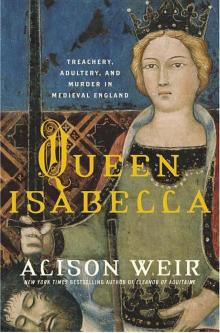 Queen Isabella
Queen Isabella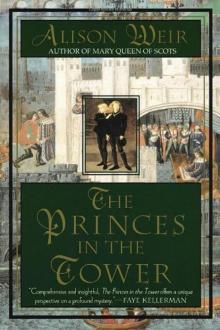 The princes in the tower
The princes in the tower